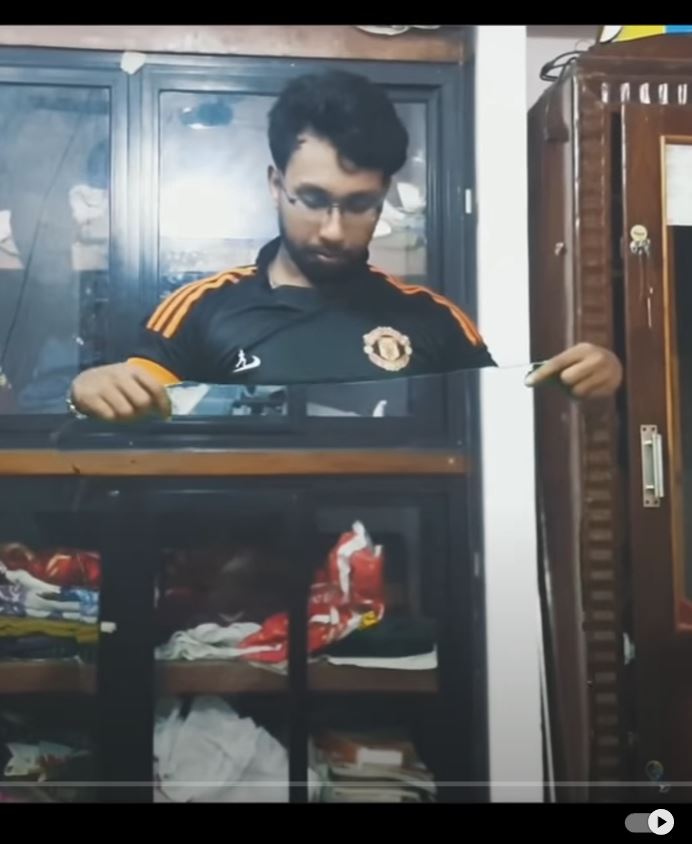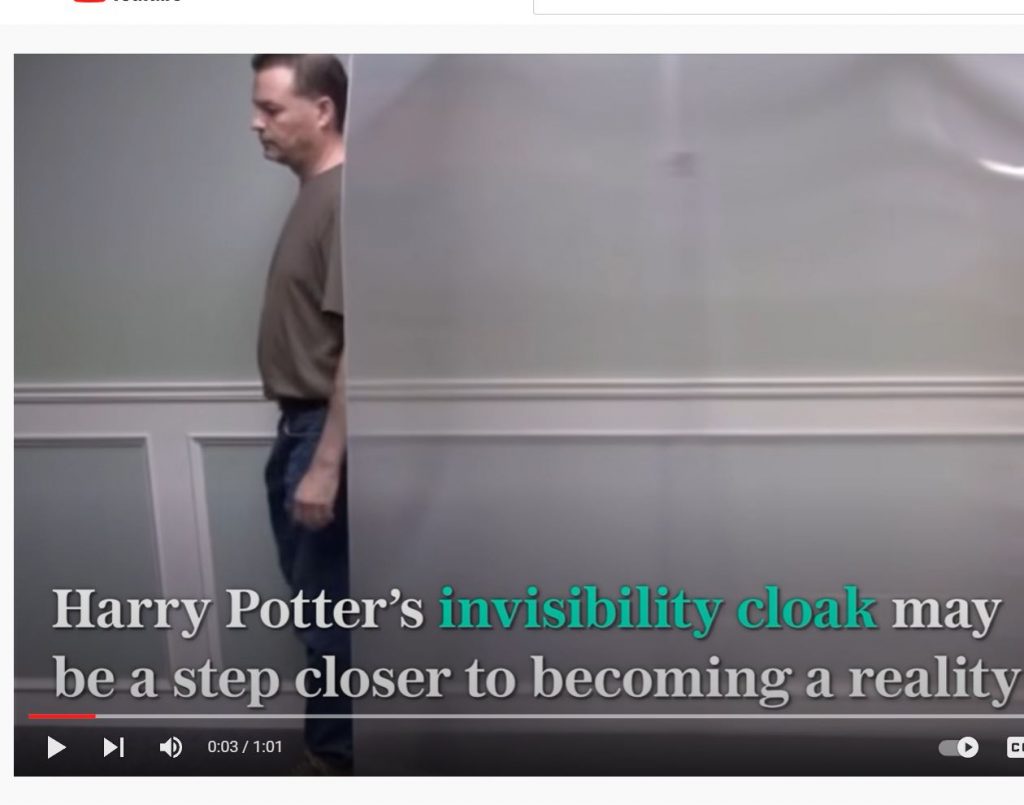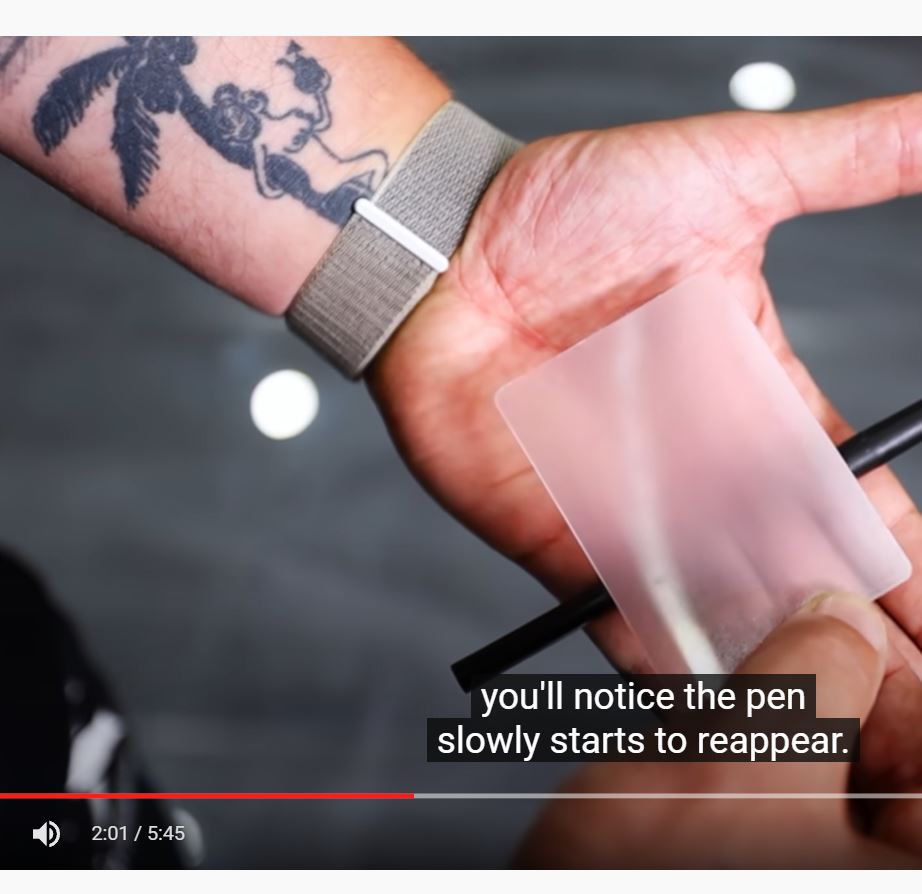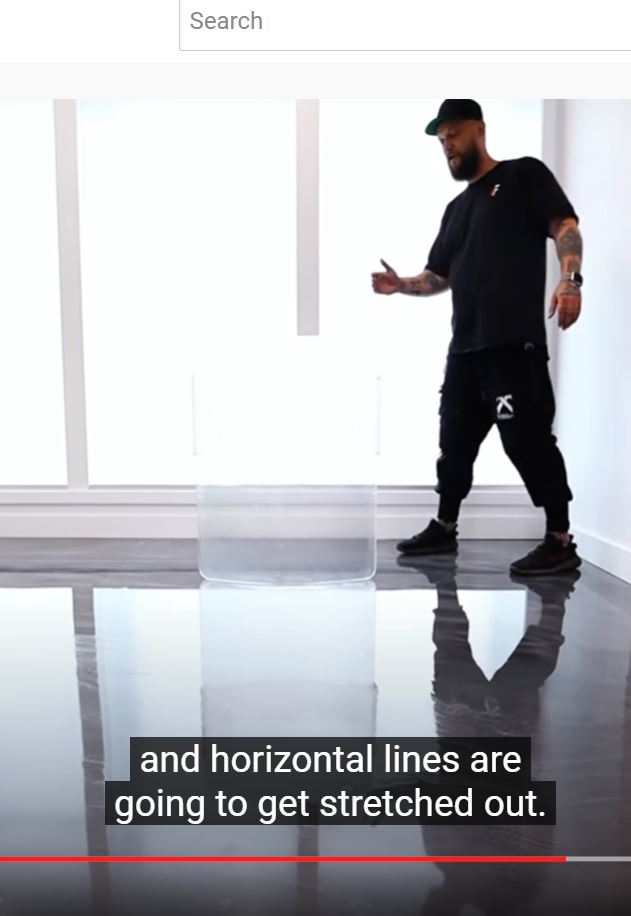Metamaterials are usually identified by indicating it is a constructed material that has characteristics not observed in nature. While typically referring to nanoscale materials, there are metamaterials that are on the millimeter scale. (That will be covered in a future blog.)
Currently, in the public domain, there are two types of invisibility cloaks. The one that exists in movies and a lot of videos is fake. While the process is straightforward the effort takes some time. The video in Reference 1 depicts how to make a video of a “invisibility” cloak. The developer shows of background of the room he will be filming in. He then walks into the view of the camera and picks up the “invisibility” cloak and moves it in front of him, which shows portions of the room behind him where ever the cloak is covering him (Figure 1). The room is perfectly shown as it was in the beginning of the video.
Figure 1
About 1:20 into the video, the developer then shows how this illusion is created. He has a video (even a still picture would work as long as it has the same camera position) of the room. When he walks into the viewing area, he picks up a green cloth and goes through whatever disappearing motions he will be showing. The rest of the video shows how he can make the area with the green cloth transparent in that video. Once that is completed, the modified video is overlaid on the background video/picture. Where the green cloth had been on the film, the original background appears. The more complex the background, the more the “invisibility” cloak appears to be real. Based on examples of public domain information of actual modification of the light path, the clarity of the background indicates that things have been manipulated.
There is a significant amount of information about the state of actual invisibility cloaks, most of it focuses on a Canadian company, HyperStealth Biotechnology Corp. [Ref. 2]. Their product is called Quantum Stealth. The picture below is a screen capture from a video of the product [Ref. 3], which depicts a person emerging from behind the “cloak” (Figure 2).
Figure 2
This is the latest version in a long series of inventions to improve the capabilities of the material. So how does it work? While the actual fabrication of the material is not available, there are certain fundamental principles that can be surmised. In order to change the way light appears on an object, it is necessary to create something that will bend/transform light in a manner that does not occur in nature – a metamaterial.
Reference 4 has a good explanation of how light bends going through a material (Figure 3 – time 2:10 in video), which is a lenticular lens. Further on in the video (Figure 4 – time 3:45). The author demonstrates a “invisibility shield” created from two opposing lenticular lenses filled with water between the two lenses.
Figure 3
Figure 4
What is noticeable is that the vertical window line has disappeared at the shield. The property of the device is such that is takes the horizontal structure and in-effect creates the continuous horizontal structures across the “shield”.
There is another issue that is impacted by Snell’s Law. Different wavelengths (colors) are bent (refracted) differently based on the wavelength. Work has been done to address both visible and light outside the visible portion to be part of the reimaging of the background. Obviously, there have been significant improvements based on the Quantum Stealth material’s latest version.
For those who would like a more detailed, scientific explanation, Reference 5 provides a good description with the required mathematical details. Quoting from the beginning of Metamaterials explanation and explaining that this was first applied to the cloak:
“The immense potential of refractive index engineering in metamaterials can be further exemplified by recent progress in the field of transformation optics that enabled novel opportunities in the design of graded-index structures … The basic idea of the transformation method is that, to guide waves along a certain trajectory, either the space should be deformed, assuming that material properties remain the same, or the material properties should be properly modified.”
Remember: Metamaterials are a novel class of functional materials that are designed around unique micro-and nanoscale patterns of structures, which cause them to interact with light and other forms of energy in ways not found in nature. The properties of these materials are directly due to the combination of various material characteristic involving both their shape and thickness.
References:




